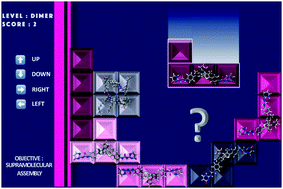Understanding the properties of dithienylethenes functionalized for supramolecular self-assembly: a molecular modeling study†
Abstract
A dithienylethene (DTE) photochromic compound functionalized by ureidopyrimidinone (UPy) quadruple hydrogen bonding blocks was synthesized by Takeshita and coworkers [Takeshita et al., Chem. Commun., 2005, 761] in order to form a light-responsive supramolecular self-assembling system. In solution, the formation of supramolecular assemblies was only observed for one DTE isomer, namely the closed-form isomer. To rationalize this experimental finding, with the help of Molecular Dynamics (MD) and (time-dependent) DFT calculations, the behaviour of open-form and closed-form monomers, dimers, hexamers and π-stacked dimers in solution is investigated. Our simulations show that, for the open-form oligomers, the progression of the supramolecular assembly is hindered due to (i) the possible formation of a very stable cyclic dimer for the open-form parallel isomer, (ii) the relative flexibility of the open-form oligomers compared to their closed-form counterparts, and (iii) the possible existence of π-stacked dimers that constitute bottlenecks blocking the progression of the supramolecular self-assembly.



 Please wait while we load your content...
Please wait while we load your content...